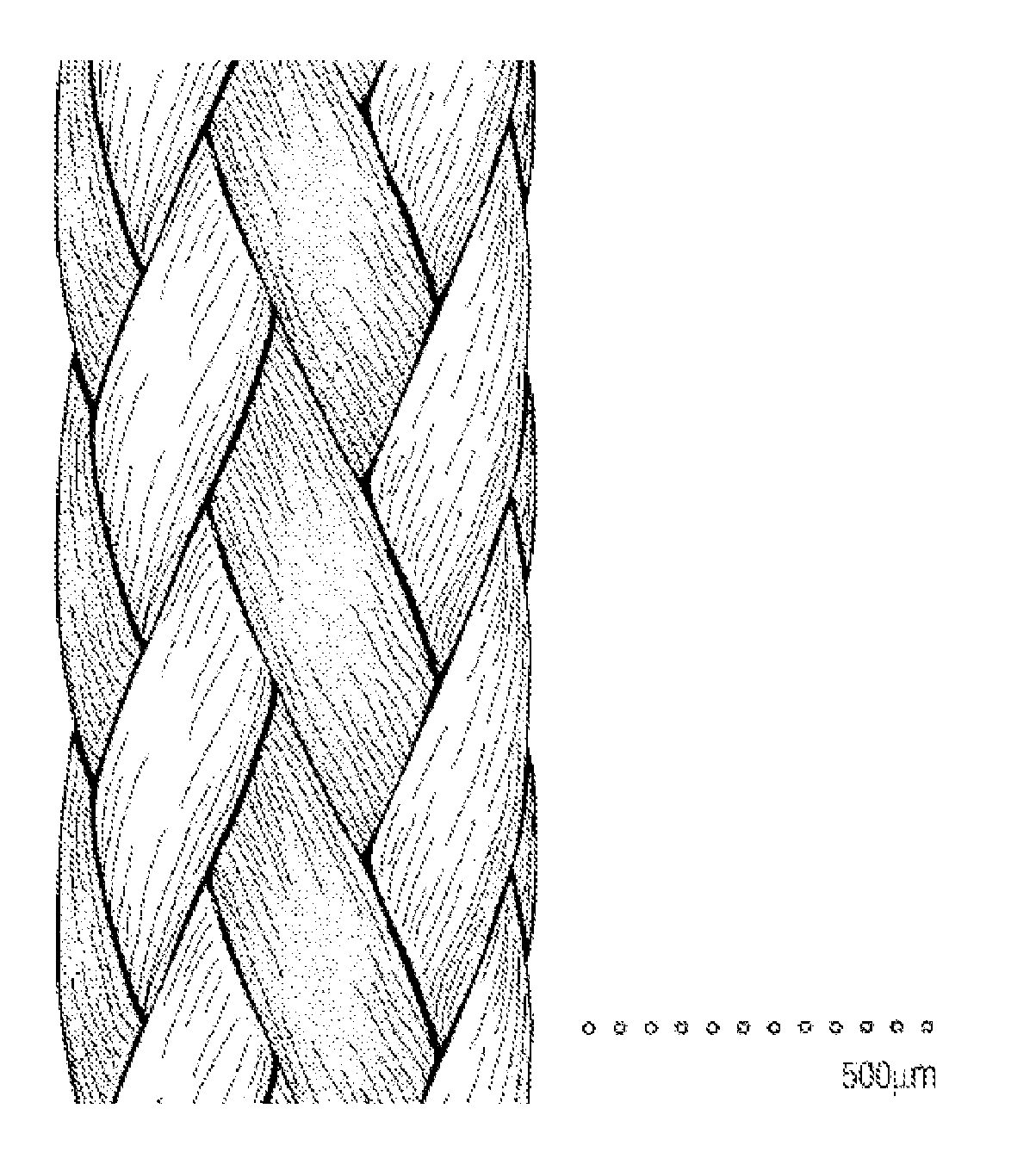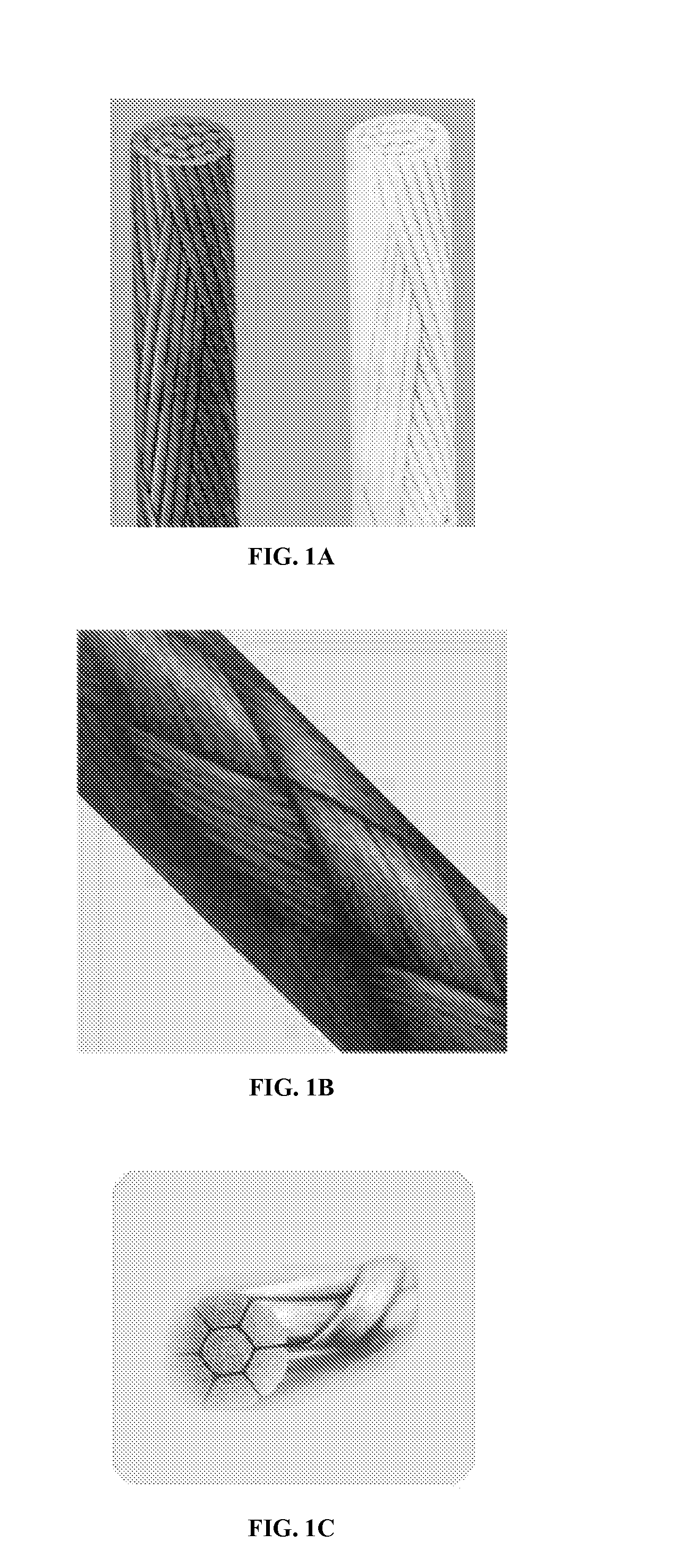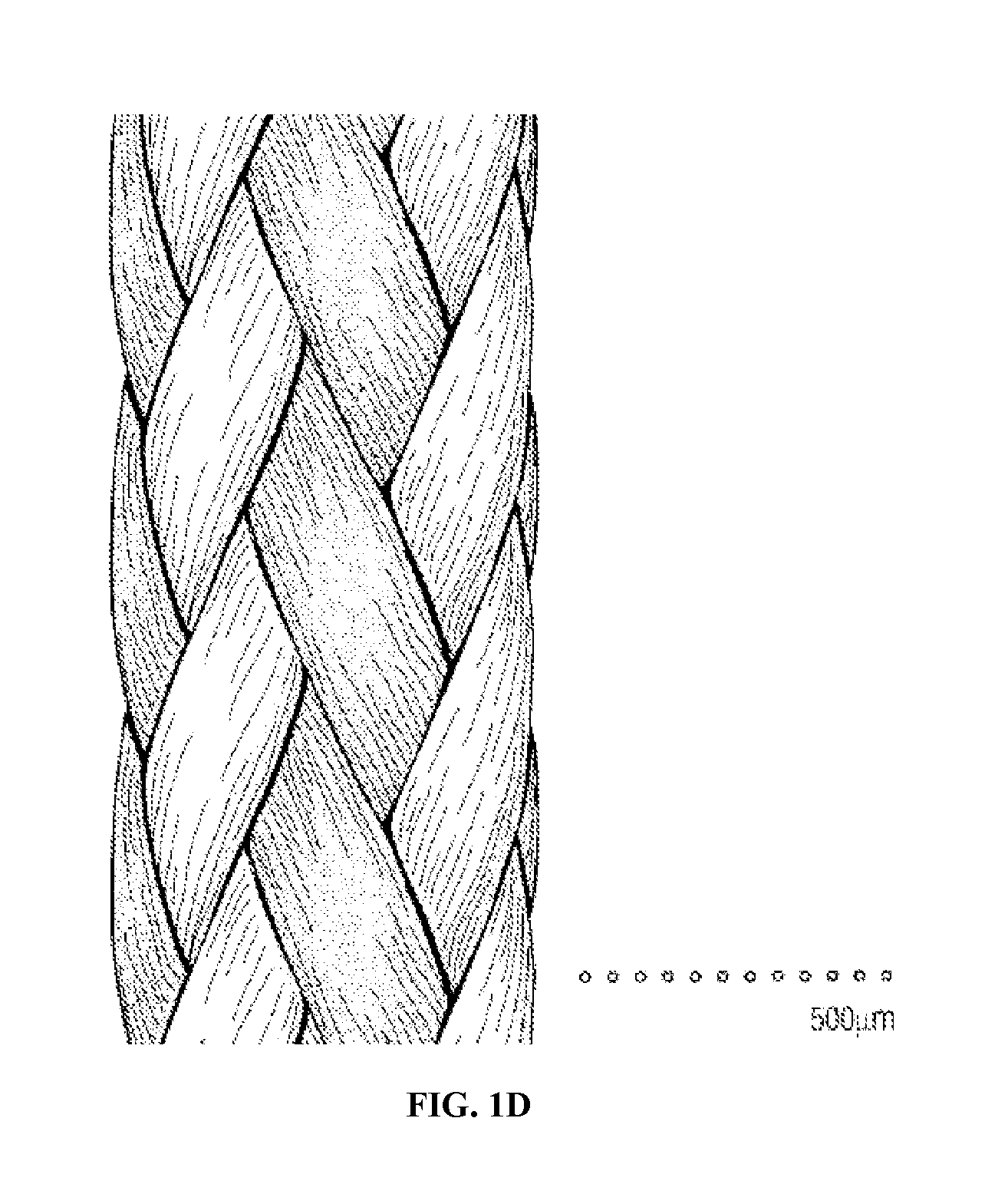Mechanically Strong Absorbable Polymeric Blend Compositions of Precisely Controllable Absorption Rates, Processing Methods, And Products Therefrom
a technology of absorbable polymer and blend, which is applied in the field of absorbable polymer blend, can solve the problems of shortened absorption period in vivo, prone to poor healing of patients, and accelerated decrease of tensile strength, and achieves rapid but controlled loss of mechanical properties, high breaking strength, and superior mechanical properties.
- Summary
- Abstract
- Description
- Claims
- Application Information
AI Technical Summary
Benefits of technology
Problems solved by technology
Method used
Image
Examples
example 1
Synthesis of Uncapped, Dodecanol Initiated at IR 800, 16 PPM Tin, 90 / 10 Poly(L(−)-lactide-co-glycolide)
[0086]Into a suitable 50-gallon stainless steel oil jacketed reactor equipped with agitation, 24.66 kg of L(−)-lactide and 175.34 kg of glycolide were added along with 391.89 g of dodecanol and 74.24 g of a 0.33M solution of stannous octoate in toluene. The reactor was closed and a purging cycle, along with agitation at a rotational speed of 13 RPM in an upward direction, was initiated. The reactor was evacuated to pressures less than 2 Torr, and was held at this condition for at least 15 minutes, followed by the introduction of nitrogen gas. The vacuum-nitrogen purge cycle was repeated once more to ensure a dry atmosphere.
[0087]At the end of the final introduction of nitrogen, the pressure was adjusted to be slightly above one atmosphere. The heating oil temperature was raised to 135° C. When the batch temperature reached 120° C., the agitator was stopped and restarted in the down...
example 2
[0093]In a manner similar to Example 1, a synthesis was conducted to prepare an dodecanol initiated, 90 / 10 poly(L(−)-lactide-co-glycolide) copolymer. It exhibited a similar inherent viscosity as the copolymer of Example 1. The copolymer of this Example 2 was converted into an inventive polymer blend, which was then subsequently extruded and processed into braided suture materials, which were then utilized for in vivo testing.
example 3
Synthesis of Capped, IR 600, 6.6 PPM Tin, 90 / 10 Poly(L(−)-lactide-co-glycolide)
[0094]Into a suitable 10-gallon stainless steel oil jacketed reactor equipped with agitation, 3.080 kg of L(−)-lactide and 21.919 kg of glycolide were added along with 26.64 g of glycolic acid and 4.25 ml of a 0.33M solution of stannous octoate in toluene. The reactor was closed and a purging cycle, along with agitation at a rotational speed of 7 RPM in an upward direction, was initiated. The reactor was evacuated to pressures less than 200 mTorr, and was held at this condition for at least 15 minutes, followed by the introduction of nitrogen gas. The cycle was repeated two times to ensure a dry atmosphere.
[0095]At the end of the final introduction of nitrogen, the pressure was adjusted to be slightly above one atmosphere. The heating oil temperature was raised to 130° C. at an average heating rate of 120° C. / hour. When the batch temperature reached 120° C., the agitator was stopped and restarted in the d...
PUM
| Property | Measurement | Unit |
|---|---|---|
| weight average molecular weight | aaaaa | aaaaa |
| weight average molecular weight | aaaaa | aaaaa |
| weight average molecular weight | aaaaa | aaaaa |
Abstract
Description
Claims
Application Information
 Login to View More
Login to View More - R&D
- Intellectual Property
- Life Sciences
- Materials
- Tech Scout
- Unparalleled Data Quality
- Higher Quality Content
- 60% Fewer Hallucinations
Browse by: Latest US Patents, China's latest patents, Technical Efficacy Thesaurus, Application Domain, Technology Topic, Popular Technical Reports.
© 2025 PatSnap. All rights reserved.Legal|Privacy policy|Modern Slavery Act Transparency Statement|Sitemap|About US| Contact US: help@patsnap.com



